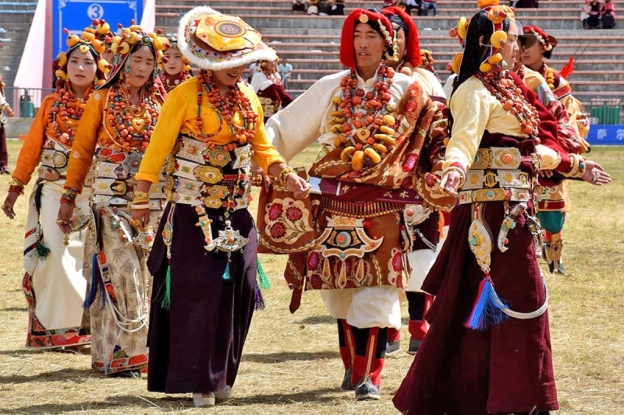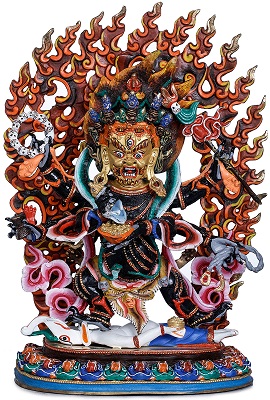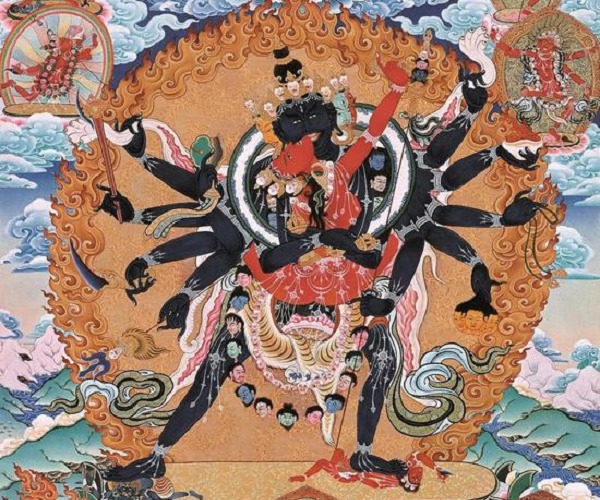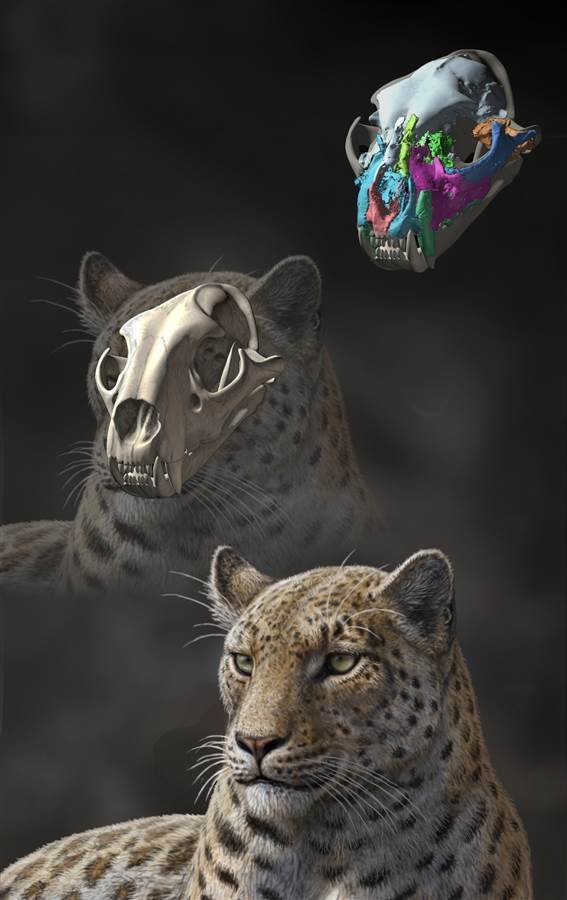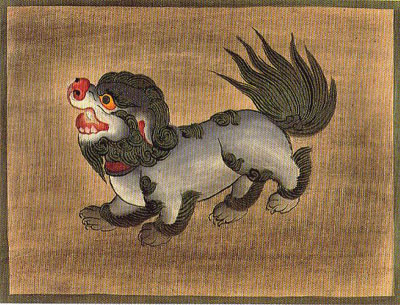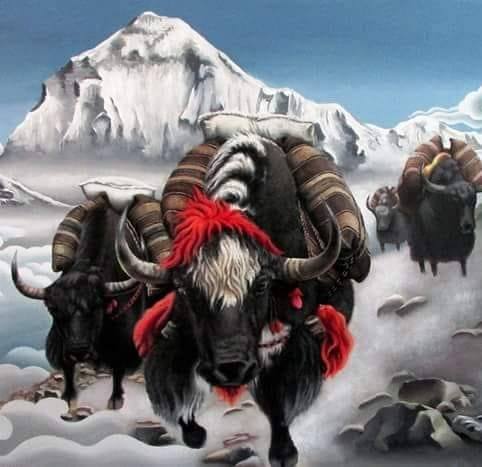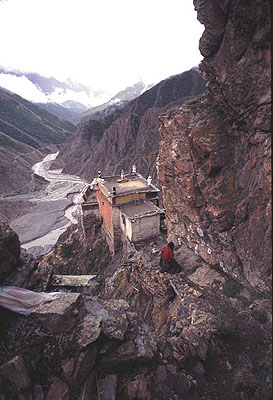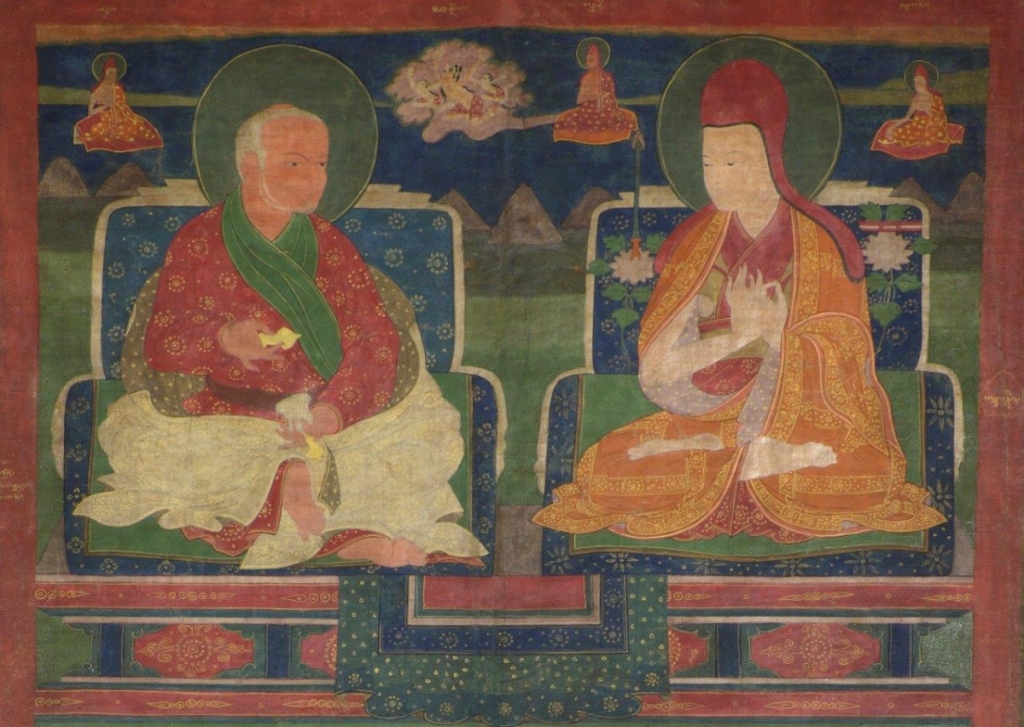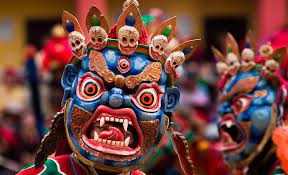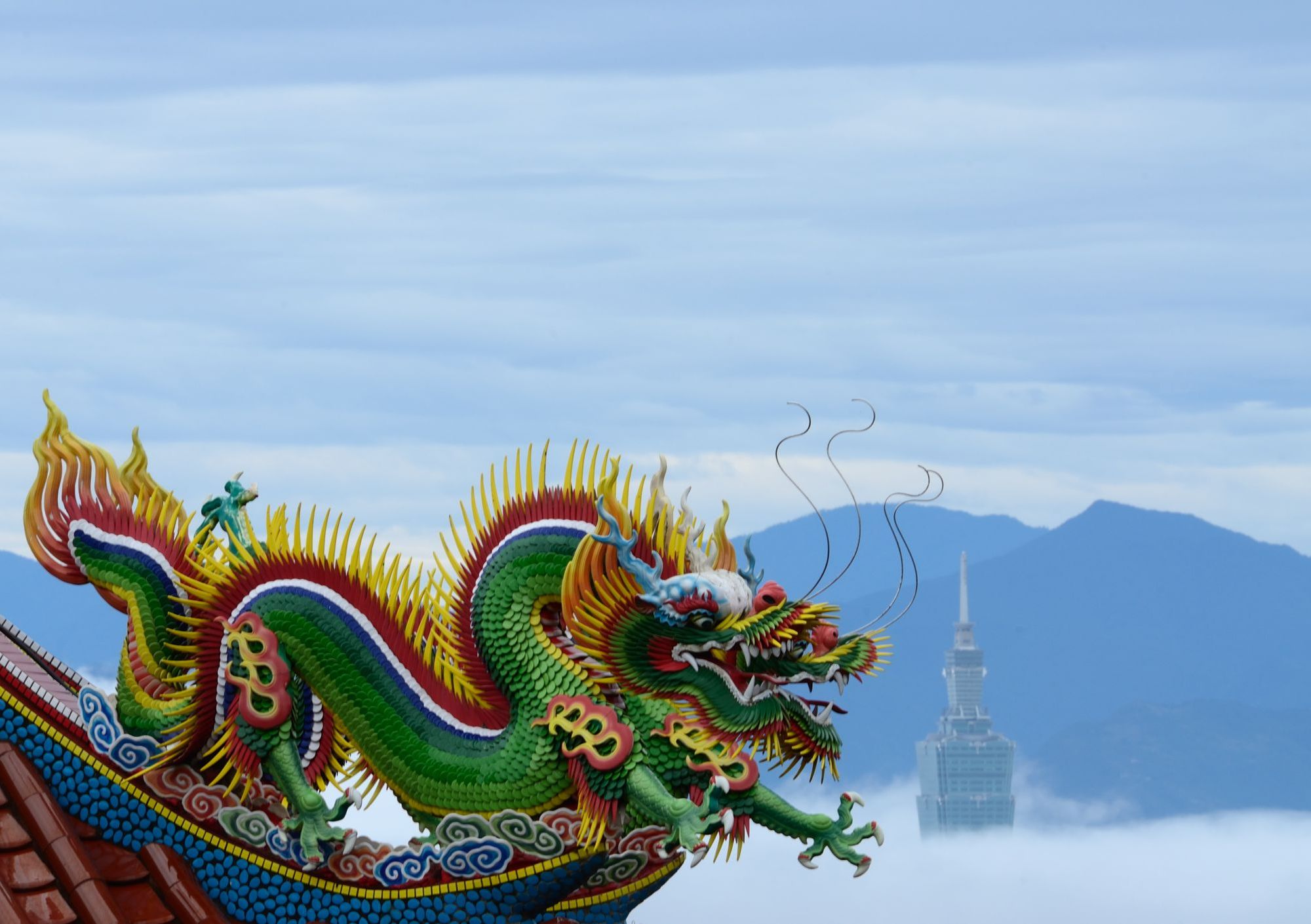TIBETAN CREATION AND FLOOD MYTH

Myths served as the basis for rituals by which the ways of humanity and those of nature could be psychologically reconciled. Myths are an important part of every society, including our own. Without at least a basic understanding of a cultures myths it’s impossible
to fully understand that culture because myths express a societies beliefs
and justify it’s institutions, customs and values.
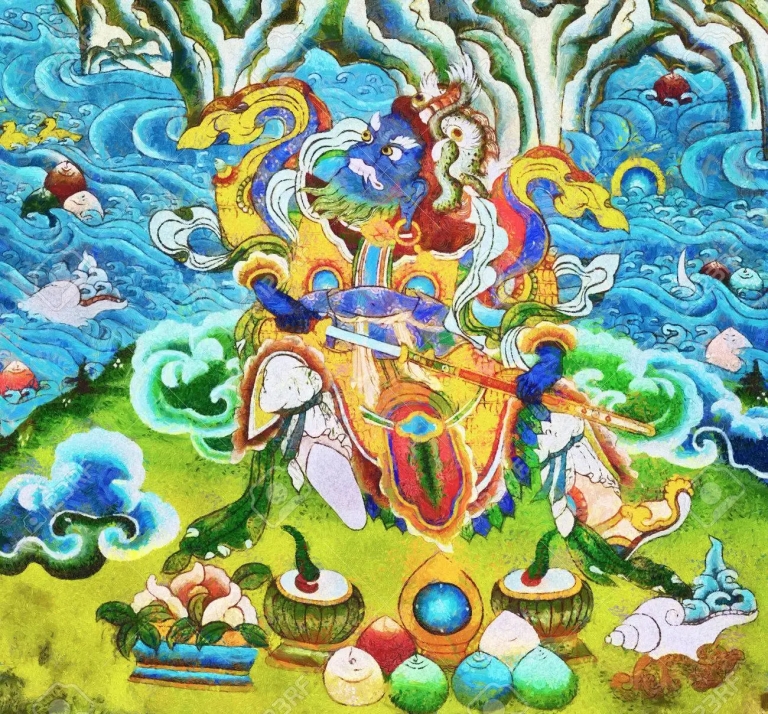
TIBET: THE LAND OF MYTHS AND MYSTICISM
Tibet, the “forbidden land’ that was once shunned to the outer world, lies beyond the mighty Himalayas on the highest plateau in the world. Located 5,000 meters above sea level, Tibet is also known as the ‘Roof of the World’. This Buddhist Kingdom that remained long closed to foreigners and isolated to the world outside until recently, holds a strong fascination for many people, scholars, pilgrims, travelers and explorers alike who are all in pursuit of real “Shangri La”. The land of snows – Tibet never fails to charm visitors from all over the world. Heavenly lakes, mysterious rivers and breathtaking landscape, Tibet is nature’s paradise and is sure to leave you amazed with an unforgettable experience of land, people and mysticism. Apart from its geographical and natural wonders, Tibet’s long history, ancient culture, heritage and religion appeals people worldwide to visit this mysterious land.
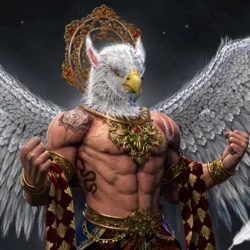
Mythology of Tibetan Mountain Gods
There are countless high mountains in Tibet, and ancientTibetans believed that Gods resided on every one of them. The worship of mountain Gods was one of the most important forms of natureworship among ancientTibetans; it was fundamental to their entire belief system. Each mountain God possessed his own territory and was in charge of particular affairs. Around each God sprang up myths, legends, sacrificial rites and procedures. Analysis of Tibetan mountain Godworship should lead to a fuller understanding of Tibetanmythology, and to a vision of the larger structures of that mythology.
The myths of Shangri-La and the harsh realities of the past Tibet
The Myths, Challenges, and Rewards of Tantra
Tibetan Myths Surrounding Snow Leopards
Tibetan tales: old myths, new realities
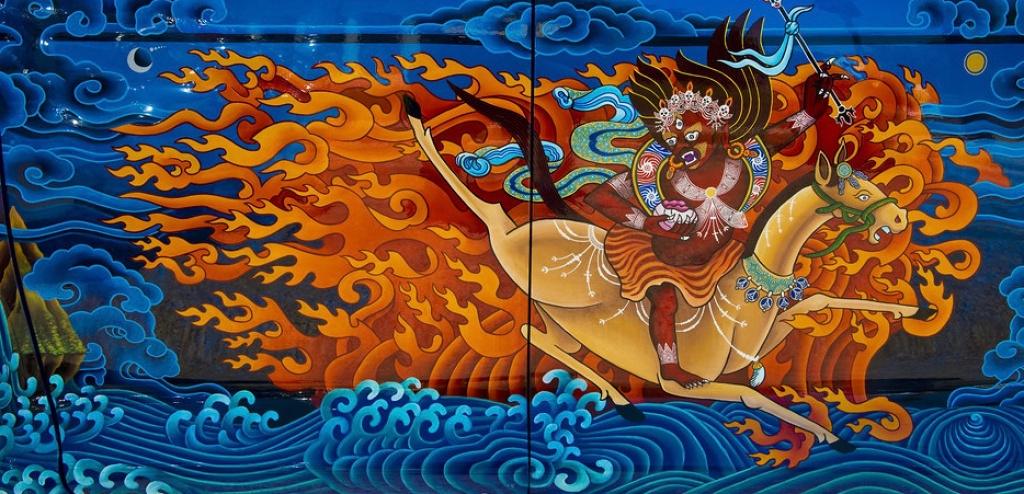
Tibetan mythology refers to the traditional as well as the religious stories that have been passed down by the Tibetan people. Tibetan mythology consists mainly of national mythology stemming from the Tibetan culture as well as religious mythology from both Tibetan Buddhism and Bön Religion. These myths are often passed down orally, through rituals or through traditional art like sculptures or cave paintings. They also feature a variety of different creatures ranging from gods to spirits to monsters play a significant role in Tibetan mythology with some of these myths have broken into mainstream Western media, with the most notable one being the Abominable Snowman – the Yeti.
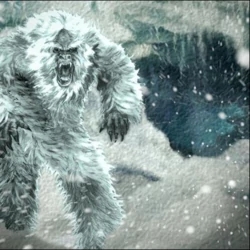
Buddhas
SHAKYAMUNI
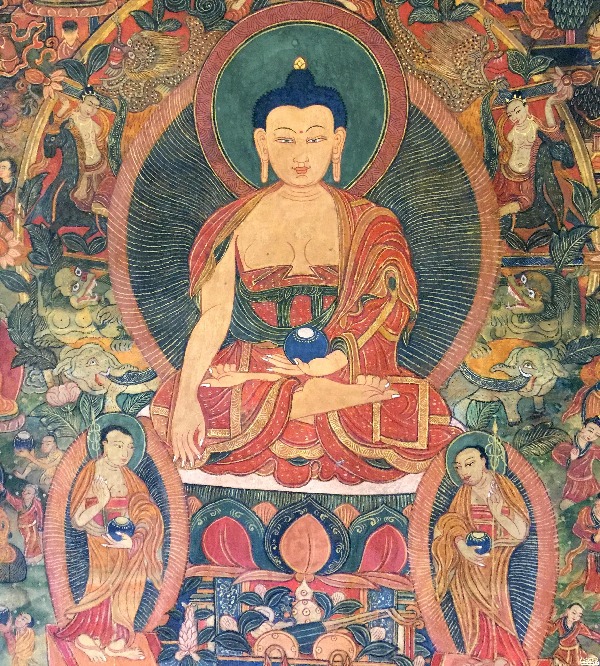
Shakyamuni, formerly known as Gautama Siddhartha, is the founder of Buddhism. Shakyamuni was born in Kapilavastu, the north of ancient India around 500BC, and he was the son of King Śuddhodana. After enlightenment, he was respected by the world as “Sakyamuni”, meaning “the sage of the Sakyamuni”.
Bodhisattvas
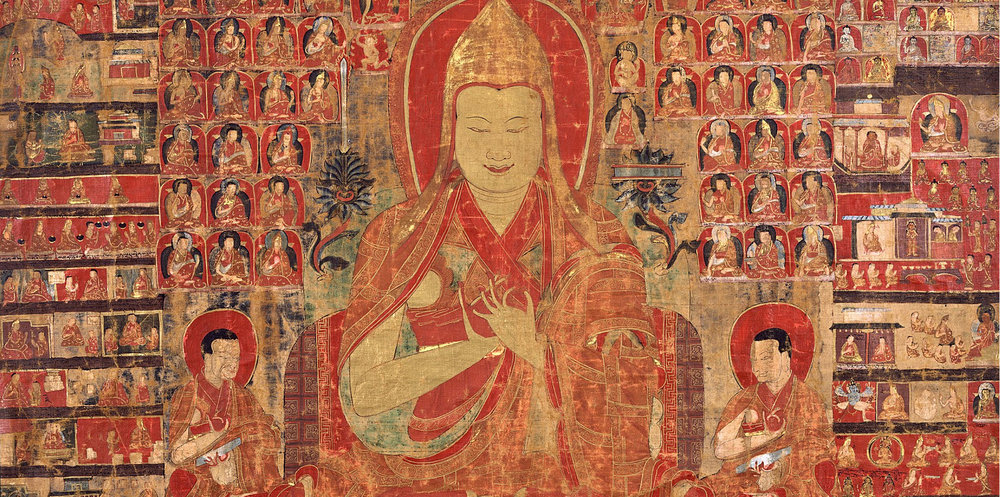
Bodhisattva figures also account for a large proportion of Tibetan Buddhism. In Tibetan Buddhism, Guanyin is the most respected person in the Bodhisattva beliefs, followed by Manjusri, Samantabhadra, Ksitigarbha Bodhisattva, etc. Avalokitesvara with a thousand hands and a thousand eyes is a common kind of Guanyin.
Guanyin
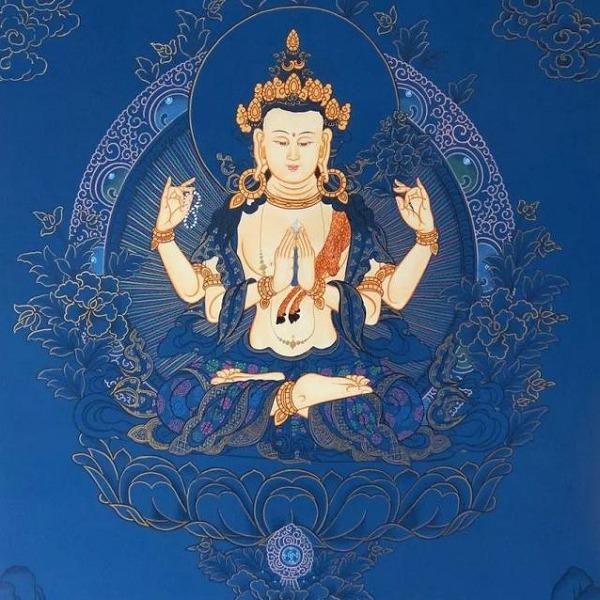
Guanyin is the incarnation of wisdom and compassion in Buddhism. When all beings encounter any difficulties and pains and can recite the name of Guanyin sincerely, they will be rescued by Guanyin. The famous Potala Palace in Lhasa is considered to be the dojo of Guanyin Bodhisattva.
Manjusri

Manjusri Bodhisattva is responsible for wisdom in Buddhism, and his dojo is in Mount Wutai, Shanxi, China. In Buddhist temples, he usually stands on the left side of Sakyamuni Buddha, serving as the left guard.
Taras

In Tibetan Buddhism, Tara is called “Dolma”. According to legend, she is the incarnation of Guanyin Bodhisattva who manifested herself to save the sufferings. According to the sutra, Tara is transformed from the eyes of Guanyin Bodhisattva. There are 21 forms in total. They have different body colors. Tibetan Buddhism calls them 21 Tara. The most common and popular Tara statues in Tibetan monasteries are White Tara and Green Tara.
WHITE TARA
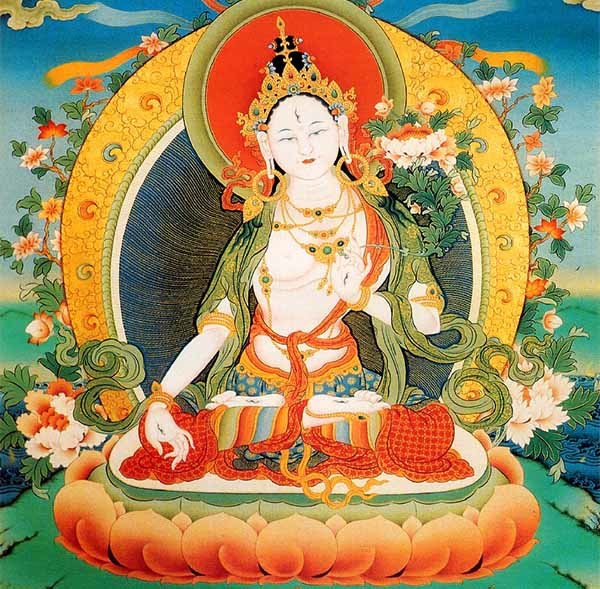
In Tibetan Buddhism, White Tara is one of the three deities of longevity. If we want to live longer for ourselves or others, praying for White Tara is very important. White Tara has a pure white body as well a dignified and peaceful face. She has one eye on her hands and feet, and three eyes on her face, so she is also called the seven-eyed goddess.
GREEN TARA
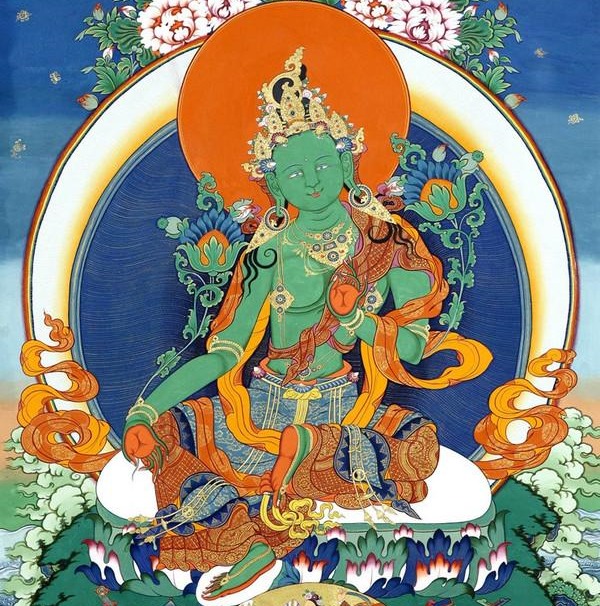
She can save eight kinds of suffering. At the same time, she can turn the “suspicion”, one of the Five Poisons in human behavior into complete wisdom, which has the merits of protecting women and children. The statue of Green Tara is in Bodhisattva costume. The whole body is emerald green, and her head is wearing a small five Buddha crown. Her left hand is placed on the chest, holding Utpala flower (blue lotus), and the right leg is stretched out.
Goddesses
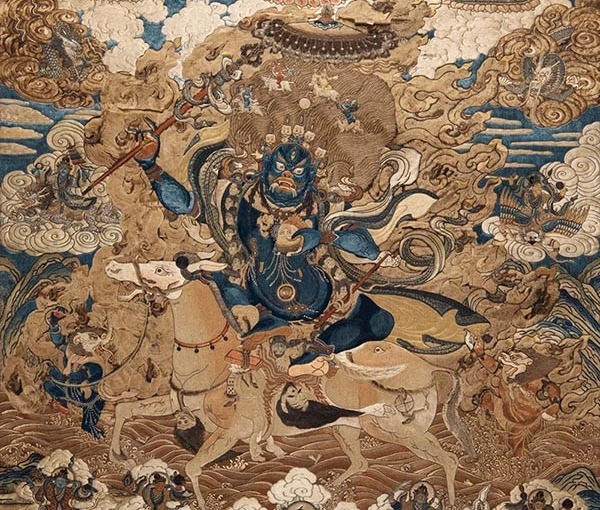
They are female protector deities worshipped in Tantric Buddhism. According to Tibetan Buddhism, the goddess is the source of all Buddhas. It mainly includes Palden Lhamo, Dakini, Usnisavijaya, Ushnisha Sitatapatra, and so on.
Dharma Protectors
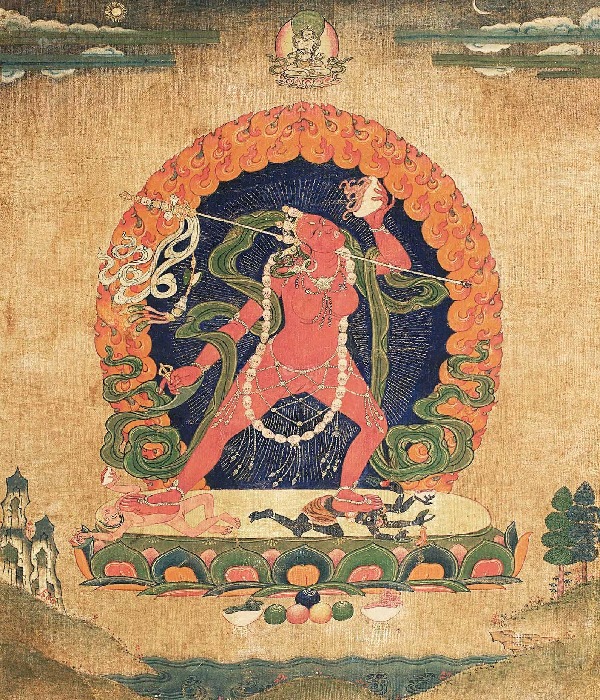
Dharma protectors are the deities who protect the Buddha’s Dharma. Buddhism believes that when the Bodhisattva spreads the Dharma if there are no effective protectors, Buddhism will fall. They can benefit all living beings, as well as drive away those who endanger Dharma. They have extraordinary supernatural powers and are invincible. Many figures are the combinations of ancient Indian Brahmanism and Tibetan primitive religion – Bon.
Vajra Holders
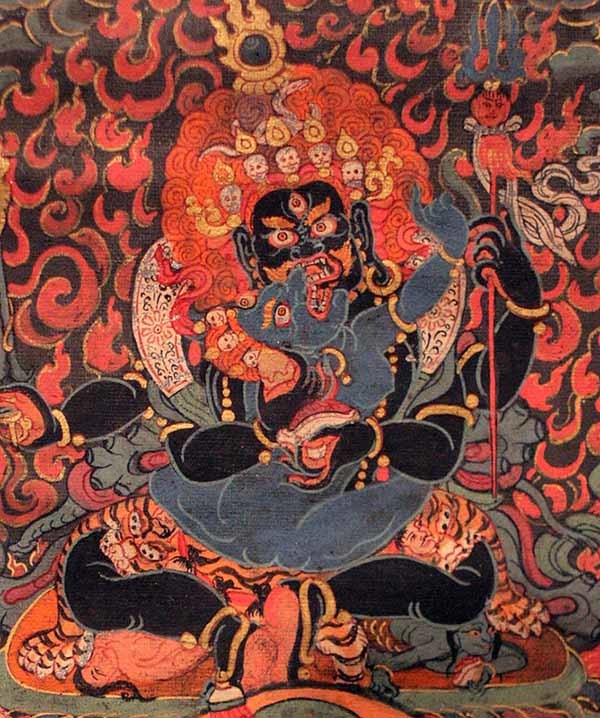
Vajra holders are mainly the deity or protector of Tantric practice in Tibetan Buddhism. The most famous and common ones in Tantric Buddhism are Cakrasamvara, Yamantaka, Hayagriva, Guhyasamāja vajra, Guhyasamāja and so on. Its characteristics generally appear in the image of anger and majesty and have the power to deter evil.
Masters

Master mainly refers to the founders of various sects in the history of Tibetan Buddhism, or the figures of famous monks of that sect. Among them, the most commonly known are the Guru Padmasambhava, founder of the Nyingma School, Atisha and Mirarepa of the Kadam School, Guru Tsongkhapa, founder of the Gelug School, and Dalai Lamas and Panchen Lamas.
Dharampalas [known in Tibetan as Drag-ched]
The most important category of these deities is the group of eight, known as Dharampalas (Sans. Dharam: religion; Pala: protector), known in Tibetan as Drag-ched. The Dharampalas, or defenders of Buddhism, are divinities with the rank of Bodhisattva, and are supposed to wage war without any mercy against the demons and enemies of Buddhism.
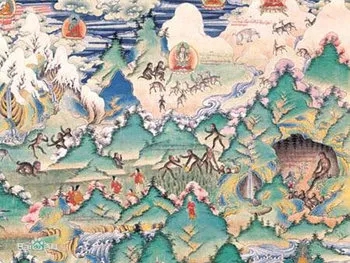
THESE EIGHT DEITIES ARE:
YAMA: THE GOD OF DEATH
MAHAKALA: THE GREAT BLACK ONE
YAMANTAKA: THE CONQUEROR OF DEATH
KUBERA
HAYAGRIVA
PALDEN LHAMO
TSHANGS PA
BEGTSE
| I DEDICATE THIS PAGE TO ALL TIBETAN PEOPLE WHO DESERVE THEIR JUST RECOGNITION. TIBETAN LITERATURE HTTPS://PLAYER.VIMEO.COM/VIDEO/102953234 TIME IN TIBET (GOPRO) FROM EDWIN LEE ON VIMEO.DRAKDZONG RIWO LHUNPO: A SONG AND DANCE YOUTUBE VIDEOS MORE YOUTUBE VIDEOS MORE VIDEOS The Forgotten World TIBETAN VIDEOS TIBETAN FILM ARCHIVE TIBETAN PILGRIMAGE TIBETAN AND HIMALAYAN LIBRARY TIBETAN BOOKS TIBETAN FOOD TIBETAN CONNECT TIBETAN CULTURE TIBETAN BLOG (IN CZECH) OM MANI PADME HUM TIBETAN BUDDHISM TANTRAS TIBETAN NOMADS FORCIBLY ‘RESETTLED’ BY CHINA STRUGGLE WITH LOSS OF AN OVER 8,000-YEAR-OLD HERITAGE For more than 8,000 years, Tibetan nomads have lived in perfect harmony with their surroundings. They have been the virtual custodians of the vast grasslands of Central Tibet, Amdo (northeast) and Kham (southeast), because they know their survival depends upon this land.They are pastoral nomads, constantly moving from one place to another to find the best grazing grounds for their herds of yaks, sheep, goats and horses. Over the centuries, these hardy people have managed to develop a deep understanding of grassland dynamics and veterinary knowledge necessary to survive in the area’s harsh and often inhospitable terrain and weather.When China marched into Tibet, all their resources like glaciers and rivers, the mineral deposits (including rare ones like lithium and uranium) were hijacked by Beijing. | ||
  |  | |
 | ||
| “SHI DE” (Peace that brings happiness) TIBET WEB SITES TIBET DIRECTORIES Indigenous peoples of Tibet FESTIVALS MUSIC & DANCE  Digital Prayer Wheel Prayer WheelsFilms & Videos Videos Tibetan Photos More Tibetan Photos Tibetan Videos Tibetan Dances  | ||
| Four Noble Truths Dalai Lama Song | ||
 | Scenes in Tibet (1940s)Tibetan Cultural Region Directory Tibetan Photo Project Tibetan Counties (maps)Tibetan Medicine Tibetan Medicine & Healing Five Elements Languages of Tibet Literature Poetry Poets in the Tibetan TraditionMusic as Medicine Music VideoAmdo Stars Palgon Boedpi Bumo Chung Chung Call it Karma Girl’s ornament (Drolbe) Kunga Yi Re Kyo Mysterious Tibet Om Mani Pami Songs and Stories of Tibet Songs The Rangzen song Tenzin Yulo Tibetan Song Jamyang Search Tibetan singers Toast Song Wen Sermo More SongsMore DancesMore Videos |   |
| Tibetan Nationality Tibetans Like Mongolia, Tibet was the center of a vast empire. Beginning in the seventh century, Tibetan armies moved north, east, and west from the area around the Yalu River in the region near present-day Lhasa. Within a few decades, they had conquered much of central Asia, including the important routes through Xinjiang used by China to trade with Western neighbors. In the eighth century the Tibetan Empire was the most feared political power in Asia. For a short period in 755, Tibetans even captured Chang’an, then the capital of China, chasing the Chinese emperor and his court from the city. Internal disputes eventually divided the Tibetan Empire, and the court’s authority gave way to local leaders. However, there are lasting legacies of this imperial period.Another lasting legacy of imperial Tibet is Buddhism. The first Tibetan emperors invited Buddhist monks from India and China to teach the religion to courtiers and aristocrats. The emperors also sent learned men to India and China to gather Buddhist scriptures and translate them into Tibetan. The teachings of Buddhism took firm root, quickly permeating Tibetan society. Buddhism came to flourish in Tibet as it had nowhere else. One difference in the Buddhism of Tibet is the importance of the lama, or teacher, with whose assistance the disciple will reach spiritual enlightenment. Therefore, Tibetan Buddhism is sometimes referred to as Lamaism.Monasteries play a key role in Tibetan society. As centers of religion, they not only minister to the spiritual needs of their lay communities but also preserve and propagate religious and scholarly traditions. In the case of Tibet, with a written history of over thirteen thousand years and thousands of religious texts, the scholarly tradition is of great significance.In recent times Tibet’s people and their culture have gained increasing attention as they wrestle with the problem of finding a political space in the rapidly changing modern world.  Tibetan Flag In the center stands a magnificent thickly snow clad mountain, which represents the great nation of Tibet, widely known as the Land Surrounded by Snow Mountains.Across the dark blue sky six red bands spread representing the original ancestors of the Tibetan people: the six tribes called Se, Mu, Dong, Tong, Dru and Ra which in turn gave the [twelve] descendants. The combination of six red bands (for the tribes) and six dark blue bands for the sky represents the incessant enactment of the virtuous deeds of protection of the spiritual teachings and secular life by the black and red guardian protector deities with which Tibet has had connection for a very long time.At the tip of the snow mountain, the sun with its rays brilliantly shining in all directions represents the equal enjoyment of freedom, spiritual and material happiness and prosperity by all beings in the land of Tibet.On the slopes of the mountain there proudly stand a pair of snow lions blazing with the manes of fearlessness, which represent the country’s victorious accomplishment of a unified spiritual and secular life.The beautiful and radiant three coloured jewel held aloft represents the ever-present reverence respectfully held by the Tibetan people towards the Three Supreme Jewels (the Buddhist objects of refuge: Buddha, Dharma and Sangha).The two colored swirling jewel held between the two lions represents the peoples’ guarding and cherishing the self discipline of correct ethical behaviour, principally represented by the practices of the ten exalted virtues and the 16 humane modes of conduct.Prayer Flags Tibetan is spoken by about 1 1⁄2 million people in Tibet. Another 3 million speakers live in the Chinese provinces of Szechwan, Tsinghai, and Kansu. Additionally about one million people in Nepal speak Tibetan as a second language.In Tibet there are three dialect groups, all closely related to one another and descended from the language of the empire’s armies. The first is Central Tibetan, spoken around Lhasa. The second is Khams, spoken east of Lhasa in Sichuan, Yunnan, and in some parts of Qinghai. The third dialect group is Amdo, spoken north of Lhasa, in Qinghai, Sichuan, and Gansu provinces. Tibetan languages are also spoken in Nepal, Bhutan, and India. All of these linguistic varieties use the same written language, which is based on an alphabet invented in Tibet during the reign of Srong bstan Sgam po (627-650). Of the major languages of Asia, Tibetan has the most in common with Burmese. The two languages belong to the same branch of the Sino-Tibetan family. The Tibetan alphabet dates from the 7th century A.D. It is based on the Sanskrit, having been adapted by a Tibetan minister sent to study Sanskrit in Kashmir.Click here to read about the Tibetan Language | ||
 Tibetan is an ancient nationality. According to historical records, early before the Qin and Han dynasties, the ancestors of the Tibetans gathered along the banks of the middle reach of the Brahmaputra. Due to the vast grasslands and lush pastures, sheep, goat and yak were easily fed and stock breeding gradually became their main economic support. They also engaged in agriculture and highland barley, a grain that is the material of zanba and ghee. Wheat, peas and canola are also planted.Zanba, mutton and beef are the staple food of Tibetans. In some areas, rice and noodles are also a regular part of the diet. Tea with butter or milk, sour milk and cheese are the favorites of all Tibetans.https://www.youtube.com/embed/NPic_MsN-y8?version=3&rel=1&showsearch=0&showinfo=1&iv_load_policy=1&fs=1&hl=en&autohide=2&wmode=transparentTibetans have their own language and letters. The wide use of Tibetan language promotes the economic and cultural exchange between the Tibetan and their neighbors. Tibetans also have their own calendar. The exact date for the new year changes every year but its mostly around the months of February and March. The Tibetan New Year for 2004 was on February 21st. The period from the 10th century to 16th century was the golden age of Tibetan culture. Tibetan art has a dual character: on the one hand, it seems related to Indian art, with its artistic patterns and stress on deep red, blue and green; on the other, it is distinctively Tibetan, different from both the East and the West.Herders of yaks, sheep, and goats and farmers of barley, peas, and tubers, the Tibetans sparsely inhabit a high, desolate region surrounded by mountains and barricaded on the east by the canyons of the Yangzi, Mekong, and Salween Rivers. The advent of Buddhism in the seventh century led to a theocratic state. Serfdom was abolished, government secularized, communes established and mechanized agriculture and other modernizations begun. Surface transportation is as yet rudimentary. They are part of the Sino-Tibetan Tibeto-Burman ethno linguistic group. | ||
TIBETAN CREATION AND FLOOD MYTH  The English word “myth” comes from the Greek word “mythos” which means word or story. Humans have used myths to describe or explain things that they couldn’t have comprehended otherwise. Questions like: why do the seasons change?where did the first human beings come from?or why does the sun travel across the sky?.Myths served as the basis for rituals by which the ways of humanity and those of nature could be psychologically reconciled.Myths are an important part of every society, including our own. Without at least a basic understanding of a cultures myths it’s impossible to fully understand that culture because myths express a societies beliefs and justify it’s institutions, customs and values.  Esoteric Buddhism Tibetan BuddhismEarly Tibetan literature was heavily influenced by Shamanism, Buddhism andConfucianism. The early literature, which began as an oral tradition, depicted a love of nature and man and held that man was a part of nature. Good was rewarded and evil was punished and values like loyalty to the King, filial piety, respect for one’s elders, true friendship and chastity were emphasized. | ||
 | ||
| Indigenous peoples of Tibet | ||
 |  | |
  | ||
  |  | |
  Indigenous peoples of Taiwan | ||
| FESTIVALS | ||
| Dancers from Yushu Prefecture performing at the summer Khampa festival, which attracts Tibetans from all over eastern Tibet. TIBETAN NEW YEAR (FEBRUARY OR MARCH)It is the greatest festival in Tibet. In ancient times when the peach tree was in blossom, it was considered as the starting of a new year. Since the systematization of the Tibetan calendar in 1027 A.D., the first day of the first month became fixed as the new year. On the New Year’s day, families unite ” auspicious dipper” is offered and the auspicious words ” tashi delek” are greeted.SAGA DAWA FESTIVAL (MAY OR JUNE)It is the holiest in Tibet, there memorable occasions coincide on this day, Buddha’s birth and Buddha’s enlightenment. Almost every person within Lhasa join in circumambulating round the city and spend their late afternoon on picnic at ” Dzongyab Lukhang” park at the foot of Potala.GYANTSE HORSE RACE & ARCHERY (MAY OR JUNE)Horse race and archery are generally popular in Tibet, and Gyantse enjoys prestige of being the earliest in history by starting in 1408. Contests in early times included horse race, archery, and shooting on gallop followed by a few days’ entertainment or picnicing. Presently,ball games, track and field events, folk songs and dances, barter trade are in addition to the above.CHANGTANG CHACHEN HORSE RACE FESTIVAL (10 AUGUST)As the most important festival in North Tibet during the golden season on the grassland,thousand of herdsmen throng to Nakchu riding fine horses,and carrying the local products.They form as city of tens south of Nakchu town. There will be thrilling horse race, archery and demonstrations of horsemanship. Songs and dance troupes from all part of Tibet will add to the fun.SHOTON FESTIVAL ( AUGUST)It is the opera festival and the greatest festivals in tibet.In ancient times pious folks went into mountain hermitages for penance, and on the last day of which yogourt was served for meal followed by entertainment of folk songs and daces. Since 7th century, opera performances were held for days in Norbu Lingka. Presently, opera contests and distribution of prizes are held for seven days.HARVEST FESTIVAL (SEPTEMBER)The farmers in Lhasa, Gyantse and Shannan to celebrating their summer harvest in this time. During that time, people enjoy with horse racing games, costume fashion show, songs and dance, archery and picnic etc.BATHING WEEK (SEPTEMBER)It is believed when the sacred planet Venus appears in the sky, the water in the river becomes purest and cure deseases. During its appearance for one week in the sky, all the people in Tibet go into the river for bathing.KONGPO TRADITIONAL FESTIVAL (NOVEMBER OF DECEMBER)Long long ago,when Tibet was in danger of large scale invasion, the Kongpo people sent out an army to defend their homeland.It was in September and the soldiers worried that they might miss the New Year,highland barley wine and other good things.So people had the Tibetan New Year on 1st October ahead of time.To memorize those brave soldiers Kongpo people present three sacrifices an stay up at night from then on. And now it has become the Kongpo Festival for entertainment like Kongpo dancing, horse race, archery and shooting.Tens of thousands of Tibetans and visitors flocked to the Drepung Monastery in Lhasa, Tibet’s capital Shoton Festival begins in Tibet | ||
 . .  | ||
 . .  . .  | ||
MUSIC & DANCE Tibetan Dance Tingri dance Gyalwa phoene phepsong Dancing Tibetan Women |  | |
| ACHE LHAMO Lhamo, or Ache Lhamo (literally, “sister goddess”) is a Tibetan folk opera. It is a combination of dances, chants and songs, with repertoire drawn from Buddhist stories and Tibetan folklore. Tibetan opera was founded in the 14th century by Thang Tong Gyalpo, a Lama and a bridge builder. Gyalpo and seven recruited girls organised the first performance to raise funds for building bridges, which would facilitate transportation in Tibet. The tradition continued, and lhamo is held on various festive occasions such as the Linka and Sho Dun festivals. In the Tibetan language, the opera is called Al-che-lha-mo, the actor lha-mo-ba and the script khrab-gzhung. | ||
LHOKHA A legend that attests to the position of Lhokha in the annals of Tibetan history states that human beings are the creation of a union between a sacred monkey and women. According to archaeological findings and legends and ancient documents, people lived in this area up to four million years ago. A primitive civilization grew up in the Yarlung Valley and a field in the village of Sare near Tsetang Town, is said to be the first farming field in Tibet. The first king in Tibetan history, Nyatri Tsenpo, really a mere chief of the Yarlong tribe, began ruling over the Yarlung valley in the beginning of second century BC. He founded the Fan Kingdom and established a hereditary monarchy. During the reign of the ninth king, Budegong, agriculture flourished and he was able to mobilize the people to excavate canal, channelling water to irrigate the flatland. A formal forming system came into existence during the reign of Yixiulie, the eleventh king, when he devised standard measurement units for allocating farmland and counting livestock. Six palaces were built in the region between the rule of the ninth and fifteenth kings. | ||
| THE FIVE ELEMENTS Water has the properties of soaking and descending Fire both heats and moves upward Wood allows it form to be shaped into straight and curved pieces Metal can be melted, molded and then hardened Earth provides nourishment through sowing and reaping Five Elements Wood Fire Earth Metal Water Directions East South Center West North Seasons Spring Summer Long Summer Fall Winter Colors Blue Red Yellow White Black Flavors Sour Bitter Sweet Acid Salt Organs Liver Heart Spleen Lung Kidney Sense Organs Eye Tougue Mouth Nose Ear | ||
Tibetan Software | ||
| TIBET – the Creation of a Mythhttp://www.indigenouspeople.net/TibetanLit/ “Om Mani Padme Hum”‘Shi De’ (Peace that brings happiness) “The wise understand by themselves; fools follow the reports of others.” I dedicate this page to all Tibetan people who deserve their just recognition. TIBETAN LITERATURE Tibetan is spoken by about 5 million people in Tibet. Tibet has 3 parts – Central Tibet U-Tsang, Northern Amdo and Eastern Kham. Nowadays Tibet is has been separated and renamed as: Tibetan autonomous region, Qinghai province, in the south of Gansu province, and west of Sichuan province and north of Yunnan province. Tibetan refugees all around the world speak Tibetan – in Nepal, Northern India, Switzerland, the Americas, etc. Of the major languages of Asia, Tibetan has the most in common with Burmese. The two languages belong to the same branch of the Sino-Tibetan family. The Tibetan alphabet dates from the 7th century A.D. It is based on the Sanskrit, having been adapted by a Tibetan minister sent to study Sanskrit in Kashmir. Tibetan is an ancient nationality. According to historical records the ancestors of the Tibetans gathered along the banks of the middle reach of the Brahmaputra. Due to the vast grasslands and lush pastures, sheep, goat and yak were easily fed and stock breeding gradually became their main economic support. They also engaged in agriculture and highland barley, a grain that is the material of tsampa and ghee. Wheat, peas and canola are also planted. Tsampa, mutton and beef are the staple food of Tibetans. In some areas, rice and noodles are also a regular part of the diet. Tea with butter or milk, sour milk and cheese are the favorites of all Tibetans. Tibetans have their own language and letters. The wide use of Tibetan language promotes the economic and cultural exchange between the Tibetan and their neighbors. Tibetans also have their own calendar. The exact date for the new year changes every year but its mostly around the months of February and March. The Tibetan New Year for 2004 was on February 21st. The period from the 10th century to 16th century was the golden age of Tibetan culture. Tibetan art has a dual character: on the one hand, it seems related to Indian art, with its artistic patterns and stress on deep red, blue and green; on the other, it is distinctively Tibetan, different from both the East and the West. Herders of yaks, sheep, and goats and farmers of barley, peas, and tubers, the Tibetans sparsely inhabit a high, desolate region surrounded by mountains and barricaded on the east by the canyons of the Yangzi, Mekong, and Salween Rivers. Monba people are Tibetan people living in the Himalayas. 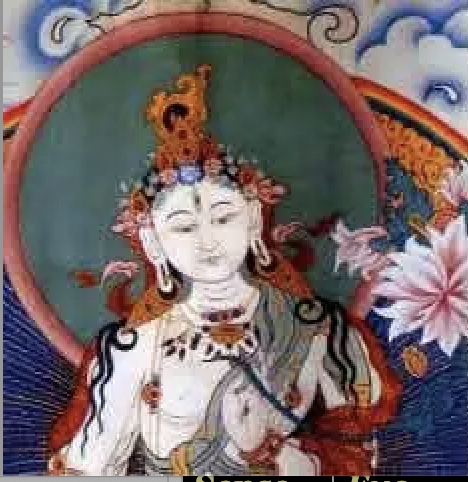 Art Beauty of Tibet Bibliography Buddha Art Buddhism Buddhism History Classical Tibetan Language Dance Festivals Five Elements History of Tibet Indigenous Peoples of Tibet Language Literature Links Medicine Movies Music & Dance Pictures Photos Poetry Singing Bowels Tibetan Buddhism Tibetan Medicine (TTM) Tibetan Music World Tibetan songs by Dekyi Dolma Tibetan songs by Sherten Tibetan songs by Tsewang Lhamo Tibet TV Videos More Videos WHAT IS TIBETAN LITERATURE?Tibetan Flag In the centre stands a magnificent thickly snow clad mountain, which represents the great nation of Tibet, widely known as the Land Surrounded by Snow Mountains.Across the dark blue sky six red bands spread representing the original ancestors of the Tibetan people: the six tribes called Se, Mu, Dong, Tong, Dru and Ra which in turn gave the [twelve] descendants. The combination of six red bands (for the tribes) and six dark blue bands for the sky represents the incessant enactment of the virtuous deeds of protection of the spiritual teachings and secular life by the black and red guardian protector deities with which Tibet has had connection for a very long time. At the tip of the snow mountain, the sun with its rays brilliantly shining in all directions represents the equal enjoyment of freedom, spiritual and material happiness and prosperity by all beings in the land of Tibet. |
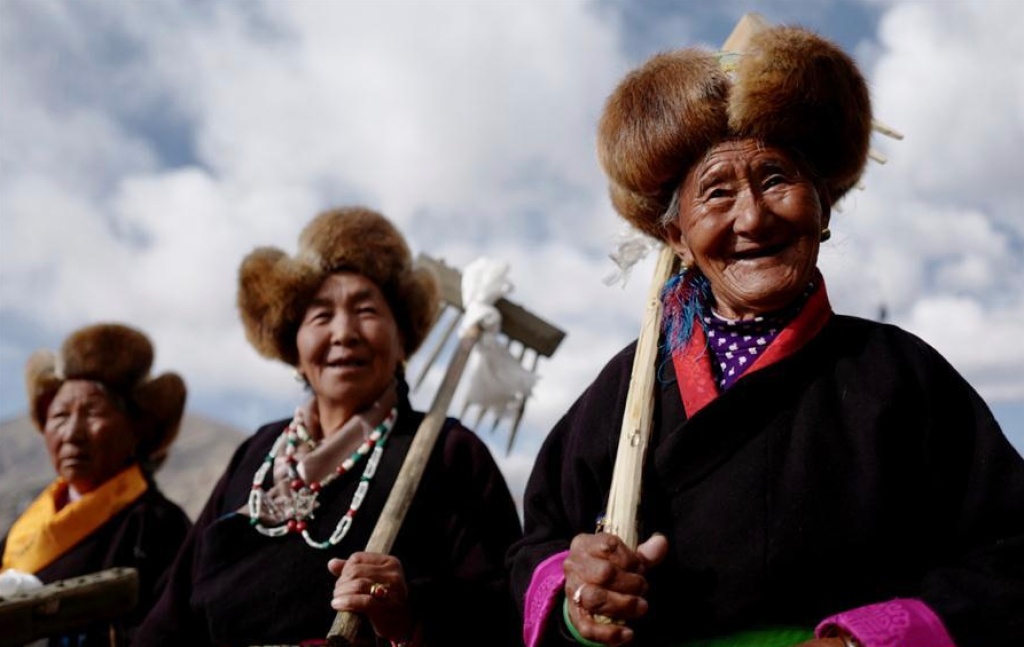
TIBET INDIGENOUS PEOPLES
Tibetans speak the Tibetan language, which belongs to the Sino-Tibetan languages and has many mutually unintelligible dialects. The traditional, or mythological, explanation of the Tibetan people’s origin is that they are the descendants of the monkey Pha Trelgen Changchup Sempa and rock ogress Ma Drag Sinmo. Most Tibetans practice Tibetan Buddhism, though some observe the indigenous Bön and others are Muslims.
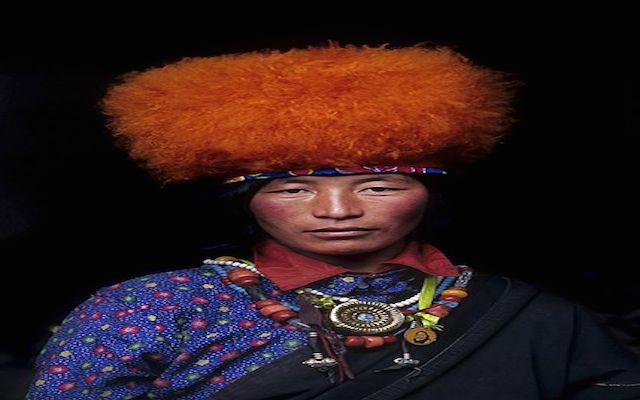
As of the 2014 Census, there are about 6 million Tibetans living in the Tibet Autonomous Region and the 10 Tibetan autonomous prefectures in the provinces of Gansu, Qinghai, Yunnan and Sichuan. The SIL Ethnologue in 2009 documents an additional 189,000 Tibetic speakers living in India, 5,280 in Nepal and 4,800 in Bhutan. The Central Tibetan Administration‘s (CTA) Green Book (of the Tibetan Government in Exile) counts 145,150 Tibetans outside Tibet: a little over 100,000 in India; over 16,000 in Nepal; over 1,800 in Bhutan, and over 25,000 in other parts of the world.

There are 2,716,388 people in the Tibet Autonomous Region, 1,496,524 people in Sichuan Province, 1,375,059 people in Qinghai Province, 488,359 people in Gansu Province (mostly in Gannan Tibetan Autonomous Prefecture and Bairi Tibetan Autonomous County) and 142,257 people in Yunnan Province (mostly in Diqing Tibetan Autonomous Prefecture). Tibetans account for 0.47% of the total population of the country. Tibetans are known as Bhotiyas in Nepal, where they are majority in regions such as Upper Mustang, Dolpo, Walung region and Limi valley. Nepal is also home to other Tibetic people such as the Sherpa and Thakali. There are also more than 10,000 Tibetan refugees in Nepal.
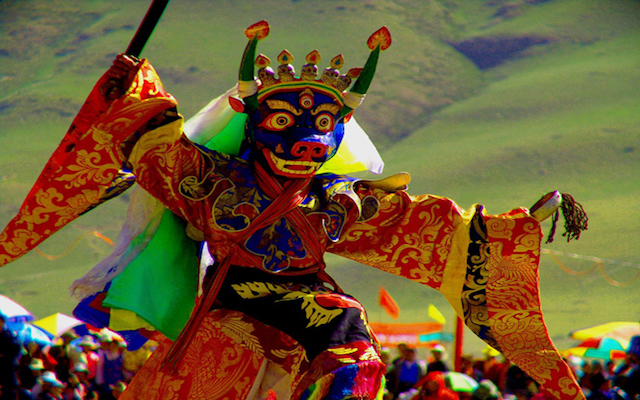
The Tibetic languages (Tibetan: བོད་སྐད།) are a cluster of mutually unintelligible Sino-Tibetan languages spoken by approximately 8 million people, primarily Tibetan, living across a wide area of East and South Asia, including the Tibetan Plateau and Baltistan, Ladakh, Nepal, Sikkim, and Bhutan. According to Tibetan mythology, the origins of Tibetans are said to be rooted in the marriage of the monkey Pha Trelgen Changchup Sempa and rock ogress Ma Drag Sinmo.
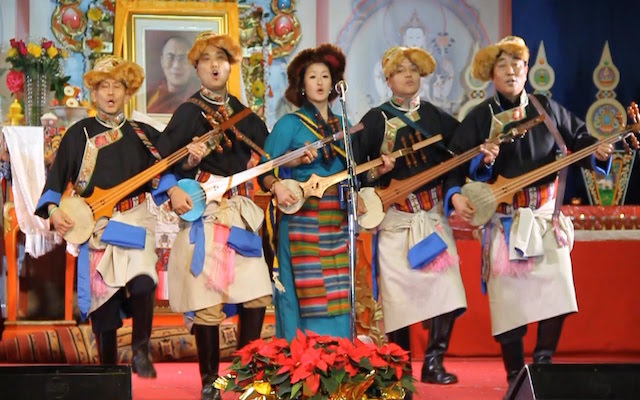
Tibet is rich in culture. Tibetan festivals such as Losar, Shoton, Linka, and the Bathing Festival are deeply rooted in indigenous religion and also contain foreign influences. Each person takes part in the Bathing Festival three times: at birth, at marriage, and at death. Tibetan folk opera, known as lhamo, is a combination of dances, chants and songs. The repertoire is drawn from Buddhist stories and Tibetan history. Tibet has national literature that has both religious, semi-spiritual and secular elements. While the religious texts are well-known, Tibet is also home to the semi-spiritual Gesar Epic, which is the longest epic in the world and is popular throughout Mongolia and Central Asia. There are secular texts such as The Dispute Between Tea and Chang (Tibetan beer) and Khache Phalu’s Advice.

LIST OF TIBETAN STATES
- Zhangzhung Kingdom (500 BC–625)
- Yarlung Dynasty (?–618) (semi-mythological)
- Tibetan Empire (618–842)
- Kingdom of Bumthang (7th century–17th century)
- Guge Kingdom (842–1630)
- Purang Kingdom
- Maryul (930-1500)
- Tsongkha Kingdom (997–1099) (Amdo)
- Phagmodrupa Dynasty (1354–1618) (Ü-Tsang)
- Rinpungpa Dynasty (1435–1565) (Tsang)
- Tsangpa Dynasty (1565–1642) (Tsang)
- Ganden Phodrang (1642–1959)
- Namgyal Dynasty (1460–1842) (Ladakh)
- Chogyal Namgyal dynasty of Sikkim (1642–1975)
- Tibet (1912–51)
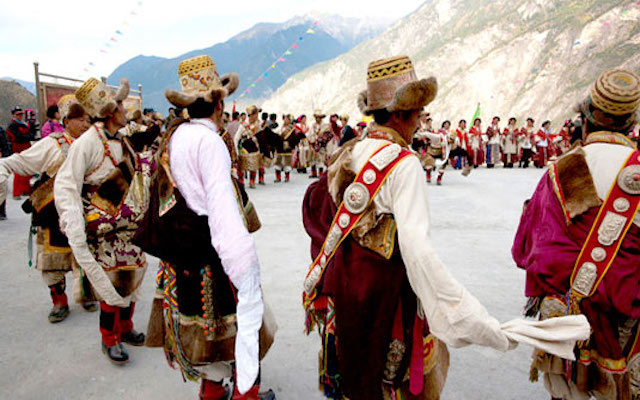
Tibetans traditionally explain their own origins as rooted in the marriage of of the bodhisattva Chenrezig and a mountain ogress. Tibetans who display compassion, moderation, intelligence, and wisdom are said to take after their fathers, while Tibetans who are “red-faced, fond of sinful pursuits, and very stubborn” are said to take after their mothers. The Tibetan people are divided into several groups. These include the Changri, Nachan, and Hor, who are further divided into fifty-one sub-tribes, each of them maintaining a distinct yet related cultural identity. The Tibetans living in Kham are of Qiang descent and speak a Qiangic language, although they are not officially classified as part of the Qiang minority.
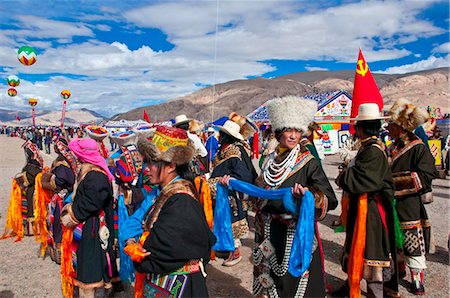
Tibetans have a legendary ability to survive extremes of altitude and cold, an ability conditioned by the extreme environment of the Tibetan plateau. Recently, scientists have sought to isolate the cultural and genetic factors behind this adaptability. Among their findings was a gene which improves oxygen saturation in hemoglobin and the fact that Tibetan children grow faster than other children to the age of five (presumably as a defense against heat loss since larger bodies have a more favorable volume to surface ratio). The ability of Tibetans to function normally in the oxygen-deficient atmosphere at high altitudes—frequently above 4,400 meters (14,000 ft), has often puzzled observers. Recent research shows that, although Tibetans living at high altitudes have no more oxygen in their blood than other people, they have 10 times more nitric oxide (NO) and double the forearm blood flow of low-altitude dwellers.
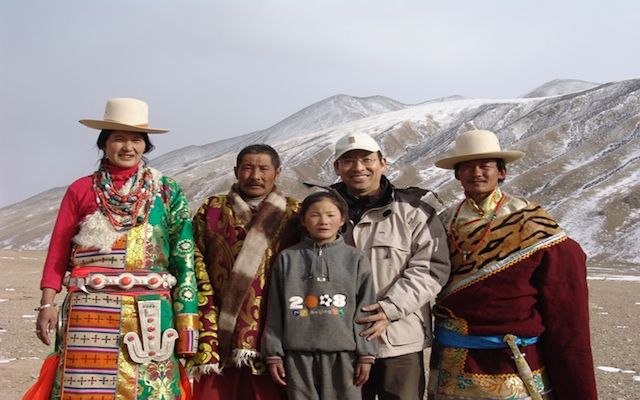
The prayer wheel is widely seen among Tibetan people. A wheel made from metal, wood, leather, or even coarse cotton, depicting or encapsulating prayers, mantras and symbols, is spun on a spindle. According to the Tibetan Buddhist tradition, spinning such a wheel several times in a clockwise direction will have much the same effect as orally reciting the prayers. In order not to desecrate religious artifacts such as stupas, mani stones, and gompas, Tibetan Buddhists walk around them in a clockwise direction, although the reverse direction is true for Bön. Tibetan Buddhists chant the prayer Om mani padme hum, while the practitioners of Bön chant Om matri muye sale du.
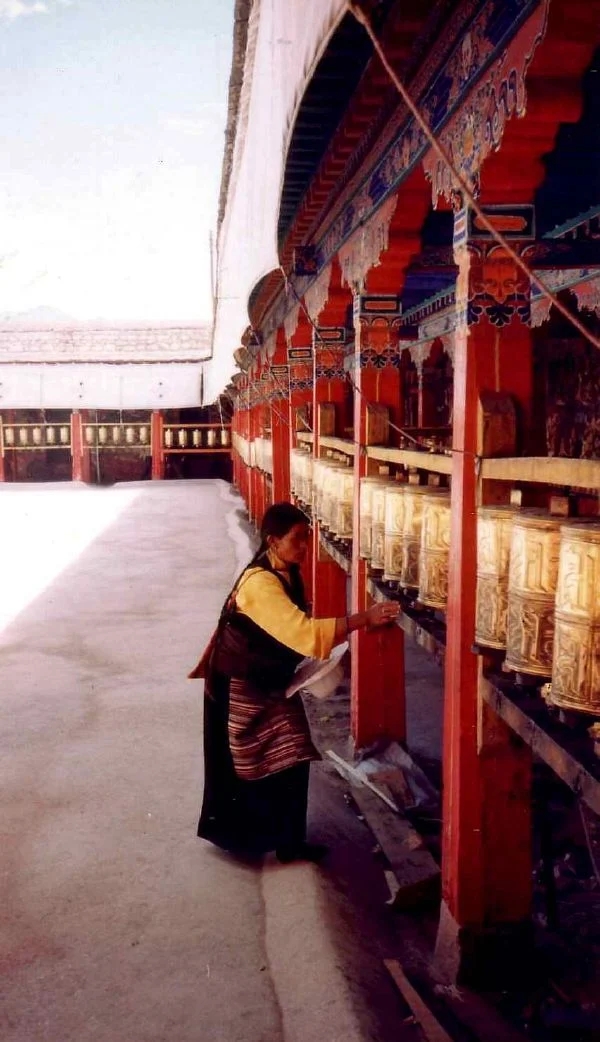
On the street, so to speak, neither Tibetans nor Chinese consider themselves to be racially related. Some Tibetans do seem to resemble the Sinitic racial type, with a epicanthal fold at the eye and a certain roundness of head. But there are also Mongolian-type Tibetans, Indic types, Dardic types, Burmese types, Turkic types and even Caucasian types in the north-east province. Although Tibetans, Mongolians and Burmese are not so racially different from Chinese as whites or blacks, most Chinese can easily identify them by face as Tibetans, not as fellow Chinese. Tibetans are unique on the planet in that their national life is wholly dedicated to Buddhism. For them the Dharma is all in all. Their culture was laboriously transformed over the thousand-year period from Srong btsan sGam po (early seventh century) to the Great Fifth Dalai Lama (early seventeenth century) from a normally ethnocentric, warlike, imperialistic national culture to a universally Buddhicized spiritual, peaceful culture. Essentially, they have been unilaterally disarmed for over 300 years. Their material development has been systematically neglected in favor of their spiritual development.
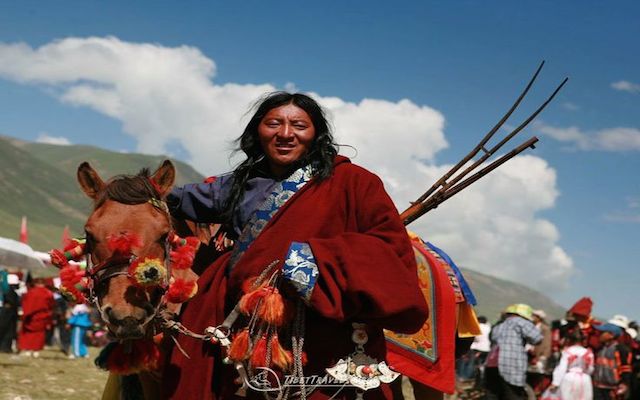
Geographically, Tibet is located on the roof of the World. It extends from the Himalayas to the deserts of Inner Asia. Culturally, Tibet is identified with its eccentric Tibetan Buddhism, and it’s governing under the spiritual leader, the Dalai Lama. Tibet is depicted as a land of wilderness where civilization prevailed relatively late through the divine agency of Bodhisattva (Kapstein, 2006). Regarding the historical presence of Tibetans in Tibet, we can say that Tibetans have historically lived as nomads and farmers whose livelihood was based exclusively on the cultivation of highland barley and husbandry of sheep and yaks. Tibet’s vital, productive resources were land, and the unit of production was the household. Similar to the indigenous people of North America, Tibetan culture is flooded with creation stories and myths. One of the stories about the origin of Indigenous people of Tibet, it mentioned that Tibetans were originally monkeys, that in the ancient times, Tibet was solely inhibited by female and male demons.
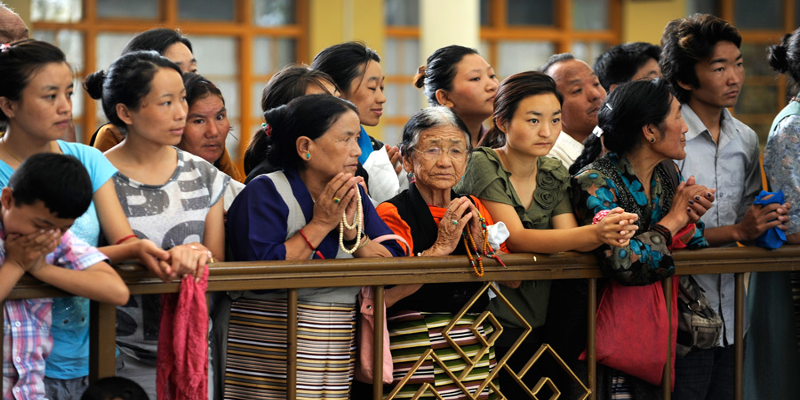
Unlike, indigenous people living in Canada today, Tibetans currently living inside Tibet do not have the freedom to form association resisting the Communist regime. Almost every Tibetan people’s acts are closely monitored. However, today Tibetans have adopted numerous ways to preserve their culture and identity by showing signs of resistance. Such as the nomads blocking the arrival of the construction vehicle, student protesting in the street with the poster of the 14th Dalai Lama and marking every Wednesday as “white Wednesday” also known as Lhakar, a movement to promote and preserve Tibetan culture and language. However, these non-violent and peaceful acts of resistance are often met with brutal punitive measures (Tibet’s History, n.d). Nevertheless, Tibetans living in exile all over the World have numerous organizations such as the Regional Tibetan Youth Congress, Students for Free Tibet, Palyul Ling Ningmapa centers, the Government of Tibet in exile and many other (Dharamsala Net. n.d). These organization and centers operating outside Tibet and Tibetans inside Tibet continue to show resistance and hope for a free Tibet.
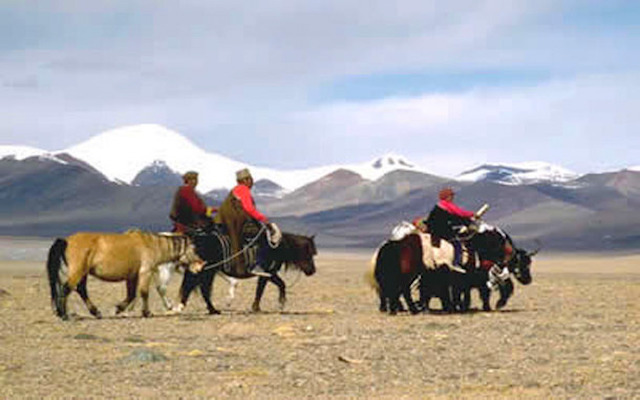
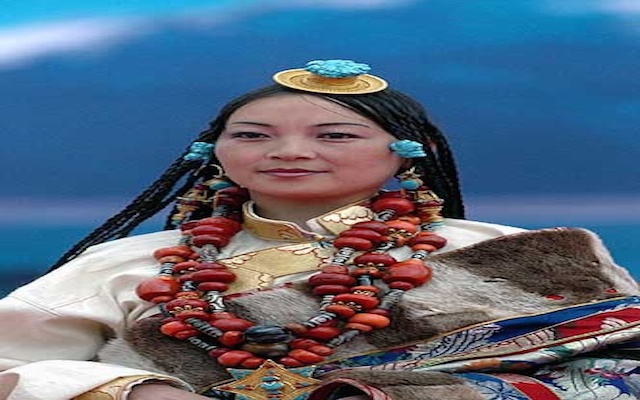
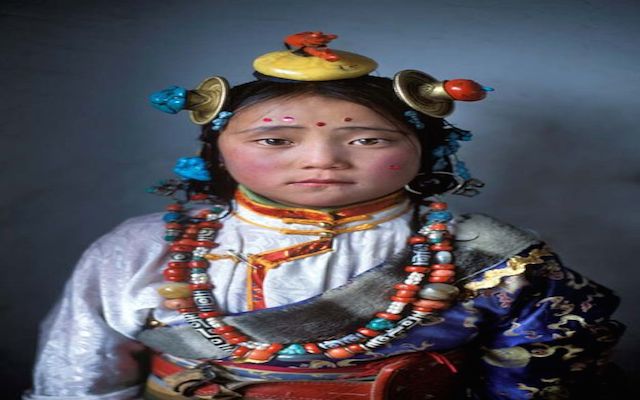
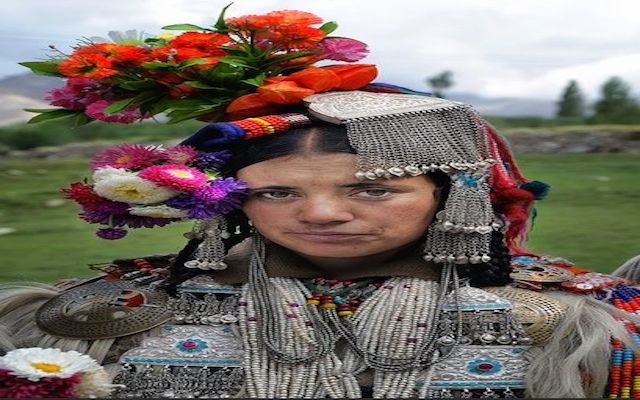


THE HUMAN RIGHTS SITUATION IN TIBET AND THE INTERNATIONAL RESPONSE Tibetans can be persecuted for their beliefs. And to ensure government surveillance on Tibetan monks and nuns, police stations have been opened inside or next to monasteries. Tibetans can be arrested simply for owning photographs of the Dalai Lama or celebrating his birthday, or for watching videos of his teachings. China is also trying to control the Tibetan reincarnation system, as we've just heard from Zeekgyab Rinpoche. After abducting the Panchen Lama and his family when he was just six years old in 1995, the Chinese Communist Party now plans to select the next Dalai Lama--an absurd claim that the international community needs to challenge decisively. And there are encouraging signs from European governments and the United Nations, in addition to the State Department. Let's say you are a Tibetan American applying for a visa at the Chinese consulate. There is a main window where everyone checks in, but you can't use that window because you are Tibetan. You are taken to a separate area where a liaison officer interviews you. You have to write a personal statement in which you narrate your whole life history, name all the groups you've ever joined, and state whether you've ever participated in a protest. Each piece of information is a data point that the consulate might use against you later.
